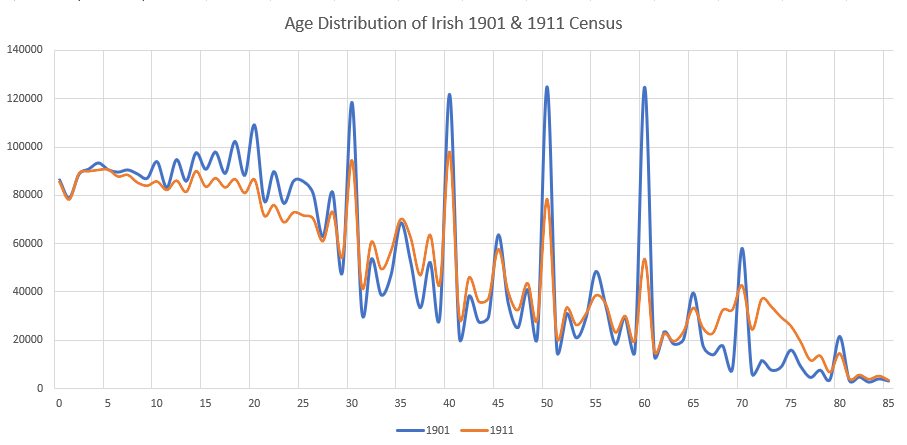After my last post about mistrusting databases, Dermot Balson commented with a discreet little link to a chart of his that deserves to be brought out and displayed proudly to the wider world. Here it is:
It charts the number of people recorded at each age in the 1901 and 1911 censuses and confirms beautifully what most researchers in the censuses have long suspected. The rounded years (30, 40, 50, 60 and so on) are wildly over-represented – most people born before 1870 simply didn’t know their age. Not surprising, given that they never saw a calendar or celebrated a birthday.
Look at the chart longer and other things become clear. The drop in total population between 1901 and 1911. The bumps around the mid-decade ages (35, 45, 55 …), indicating that many of these were also just guesstimates. And my favourite, that improbable leap in numbers aged between 70 and 80 in 1911. The Old Age Pension was introduced in 1908 for people over 70, immediately making it very important to be at least that age. By the look of it, at least 30,000 individuals promptly suffered accelerated aging.
I contacted Dermot to ask his permission to use the chart and also if he had more. Look at a sample of what he came back with:
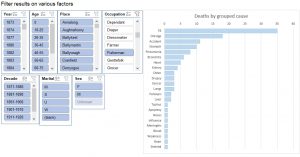
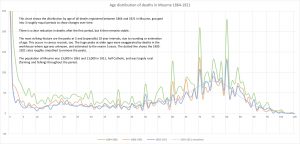
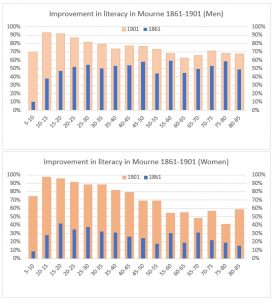
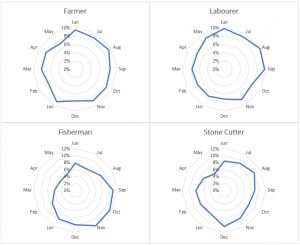
The latest YouTube video talks through all of these.
Dermot suffers from an advanced case of Albert-Casey-itis, where a researcher (usually descended from an Irish emigrant) runs out of ancestors but can’t stop. So he moves on to his ancestors’ neighbours, then to his ancestors’ neighbours’ neighbours, then to the entire locality … A truism of Irish research is that the border between genealogy and local history is very flimsy.
Like Casey, Dermot concentrates his record-collecting on the area his ancestors came from, the Kilkeel area in South Down. But as you can see, what he does is vastly superior to the Casey pile-em-high approach. A retired actuary, his spreadsheet skills are awesome. As he explained to me, he collects “transcriptions of all record sources in a single spreadsheet (with over 40 sheets), standardizing names so you can actually find records when you search, and linking births, deaths, marriages and censuses together, so that given a name, I can immediately find their marriage, a list of their children, their census records, any family deaths, newspaper references, and parent information where available, each of those with direct links to online scans.”
The end result will be the ultimate local and family history resource for the area. As a sample, Dermot has sent me a screenshot of part of his Excel file:
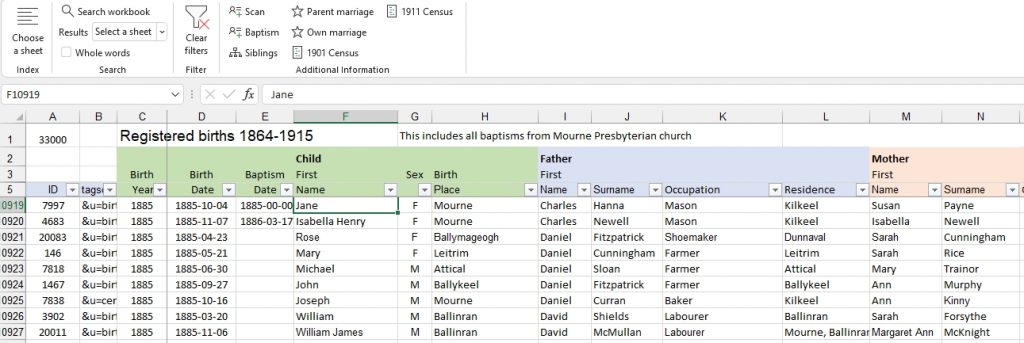
He’s anxious to spread the gospel far and wide and to share his data- here’s an extraordinary downloadable PDF of his analysis of Mourne death records.
There is at least one doctorate here for someone collaborating with him. Any Irish third-level institutions interested?
